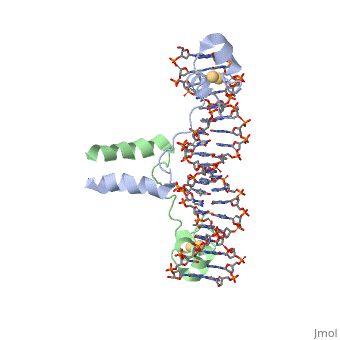Sandbox reserved 1752
From Proteopedia
| Line 65: | Line 65: | ||
<scene name='92/925553/Uvrd/1'>UvrD</scene>, also known as Helicase II, is one of many components responsible in repairing DNA damage. Helicases use energy from ATP to unwind double helices in metabolic pathways using nucleic acids. ATP molecules are typically used to store energy shared between phosphate groups that gets released when breaking bonds to drive catabolic reactions. | <scene name='92/925553/Uvrd/1'>UvrD</scene>, also known as Helicase II, is one of many components responsible in repairing DNA damage. Helicases use energy from ATP to unwind double helices in metabolic pathways using nucleic acids. ATP molecules are typically used to store energy shared between phosphate groups that gets released when breaking bonds to drive catabolic reactions. | ||
| - | Helicases were found in the 1970’s to be DNA-dependent ATPases, meaning that they use ATP hydrolysis to complete its interactions with the different types of nucleic acids it comes into contact with. Helicase II, also called UvrD is the founding member of SF1, one group of six superfamiliies used to identify helicases. SF1 and SF2 members share seven conserved sequence motifs that are involved in ATP binding [ | + | Helicases were found in the 1970’s to be DNA-dependent ATPases, meaning that they use ATP hydrolysis to complete its interactions with the different types of nucleic acids it comes into contact with. Helicase II, also called UvrD is the founding member of SF1, one group of six superfamiliies used to identify helicases. SF1 and SF2 members share seven conserved sequence motifs that are involved in ATP binding [[RasMol]] <ref name="UvrDl">PMID:17190599/ref>. UvrD is important in replication, recombination, and repair from ultraviolet damage and mismatched base pairs. Nucleotide excision repair in a normal cell is supposed to correct pyrimidine dimers and other DNA lesions when bases are displaced from their normal positions. UvrD pairs up with the UvrABC endonuclease system, which works to displace the DNA. This is then repaired by PolI and DNA ligase [3]. A sub pathway of nucleotide excision repair is transcription-coupled repair, which works with an RNA polymerase to make repairs to damage to DNA [2]. |
| Line 80: | Line 80: | ||
== References == | == References == | ||
{{Reflist}} | {{Reflist}} | ||
| + | |||
<ref>PMID:17190599</ref> | <ref>PMID:17190599</ref> | ||
<ref>PMID:24402227</ref> | <ref>PMID:24402227</ref> | ||
Voet, Voet, & Pratt. (n.d.). Fundamentals biochemistry 4e : Free download, borrow, and streaming. Internet Archive. Retrieved October 11, 2022, from https://archive.org/details/FundamentalsBiochemistry4e | Voet, Voet, & Pratt. (n.d.). Fundamentals biochemistry 4e : Free download, borrow, and streaming. Internet Archive. Retrieved October 11, 2022, from https://archive.org/details/FundamentalsBiochemistry4e | ||
Revision as of 14:25, 11 October 2022
==DNA RECOGNITION BY GAL4: STRUCTURE OF A PROTEIN/DNA COMPLEX==
| |||||||||||
UvrD
, also known as Helicase II, is one of many components responsible in repairing DNA damage. Helicases use energy from ATP to unwind double helices in metabolic pathways using nucleic acids. ATP molecules are typically used to store energy shared between phosphate groups that gets released when breaking bonds to drive catabolic reactions.
Helicases were found in the 1970’s to be DNA-dependent ATPases, meaning that they use ATP hydrolysis to complete its interactions with the different types of nucleic acids it comes into contact with. Helicase II, also called UvrD is the founding member of SF1, one group of six superfamiliies used to identify helicases. SF1 and SF2 members share seven conserved sequence motifs that are involved in ATP binding RasMol [1] [2] Voet, Voet, & Pratt. (n.d.). Fundamentals biochemistry 4e : Free download, borrow, and streaming. Internet Archive. Retrieved October 11, 2022, from https://archive.org/details/FundamentalsBiochemistry4e


